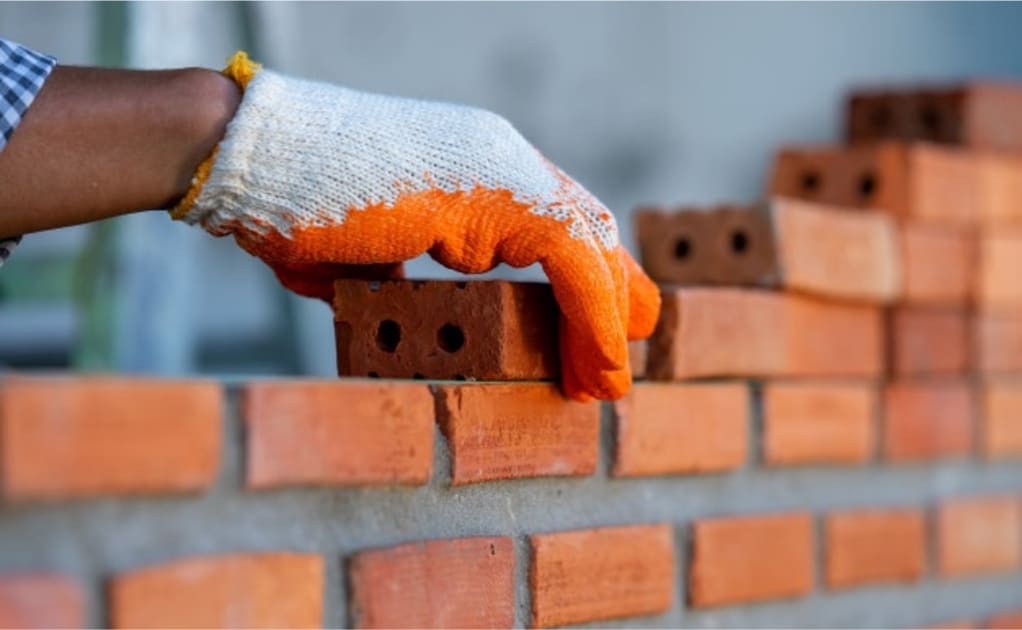Some Known Details About Bricklayer Auckland
Wiki Article
The Only Guide to Bricklayer Auckland
Table of ContentsThe 7-Second Trick For Bricklayer AucklandSome Known Factual Statements About Bricklayer Auckland The 7-Second Trick For Bricklayer AucklandIndicators on Bricklayer Auckland You Should Know
The difference in between absolutely no as well as timeless stonework is in the laying of the block. The brick is no more pressed up and down, however slanted. Absolutely no has an unique opening on the top side of the block. Therefore the mortar bed is reduced. It will sink also deeper when the next course of blocks is laid.In enhancement, we additionally paid focus to an excellent proportion in between the size and also width of the block so that it is ideal for functioning with a stretcher bond. Bricklayers are a crucial occupation in the construction market, accountable for laying blocks, pre-cut rock as well as concrete blocks in mortar. Bricklayers construct, extend as well as repair domestic as well as industrial buildings, as well as various other frameworks such as foundations, walls, chimneys or decorative masonry.
Your time as a bricklaying apprentice will typically be split in between your employer and also training carrier (such as a college), with at the very least 20% of your typical functioning hours invested in training. Your training may take place weekly, each month or in a separate block of time, and also it can take location at your workplace, at your training service provider or online.
Examine This Report about Bricklayer Auckland
When investigating building and construction, you usually uncover that any kind of brand-new or ingenious concept has in fact been attempted over as well as over once more, typically extending back years. Among these new-but-actually-old concepts is the concept of a mechanical bricklayer, a machine to automate the construction of masonry walls. It's easy to see the appeal of this idea - masonry construction seems almost perfectly matched for automation.It does not feel like it would require physically intricate activities - each block obtains a layer of mortar applied, and is simply stocked area next to the previous one. And because each block as well as mortar joint coincides dimension, placement is practically deterministic - each block coincides fixed distance from the previous one.
These equipments could not sense anything about their setting, or step where a brick required to go - they just squeezed out a layer of mortar as well as mechanically placed a block at routine intervals (Bricklayer Auckland). It's vague exactly how several of these makers ever before made it past the drawing board, yet at the very least among these (John Knight's) was used to construct a brick wall surface that supposedly still stands today.
Throughout the years, stonework has decreased in significance as a construction innovation in the developed world, and also with it the interest in automating it. Unlike with concrete 3D printing, where there are loads of attempts to establish the technology, I can only find a handful of existing efforts to automate stonework. Bricklayer Auckland.
Unknown Facts About Bricklayer Auckland
It can putting blocks in limited corridors or complicated edges, and also Hadrian can build all the walls of a small structure with simply a few relocations of the vehicle. Hadrian can presently establish around 200 blocks an hour, but they're intending to be able to do 1000 blocks an hour or even more (the blocks it sets click to investigate are various from the block masonry used in the United States, however in US masons can establish someplace in the neighborhood of check 400 obstructs a day).
SAM has a series of sensors to make up for the activity of the platform and also guarantee it's placing blocks degree, as well as can function with blocks of all various dimensions (though it will not construct CMU block wall surfaces). It gets mounted to a movable scaffolding that's increased gradually as the wall is completed.
The marketing material on Construction Robotics' site suggests that it's no longer their major focus - more emphasis is offered to their other product, MULE.Other than SAM and Hadrian, there are a few other mechanical bricklayers in numerous stages of advancement. Craftsmac, a company out of India, just recently introduced a robot mason used for building CMU wall surfaces - it appears rather similar to SAM, a wheeled framework with a robotic arm, conveyor, and mortar mixer mounted to it.

Some Of Bricklayer Auckland
A a little various classification of devices aimed at improving stonework performance is what I'll call "stonework aides". These are equipments made to aid with literally like it raising the block (they appear to be a lot more common with block than brick) as well as taking the stress off the mason, while still enabling the mason to adjust it into position, Masonry assistants day from at least 1994, when the military explored with MOM, the Mechatronically Assisted Mason's Aid.
Report this wiki page